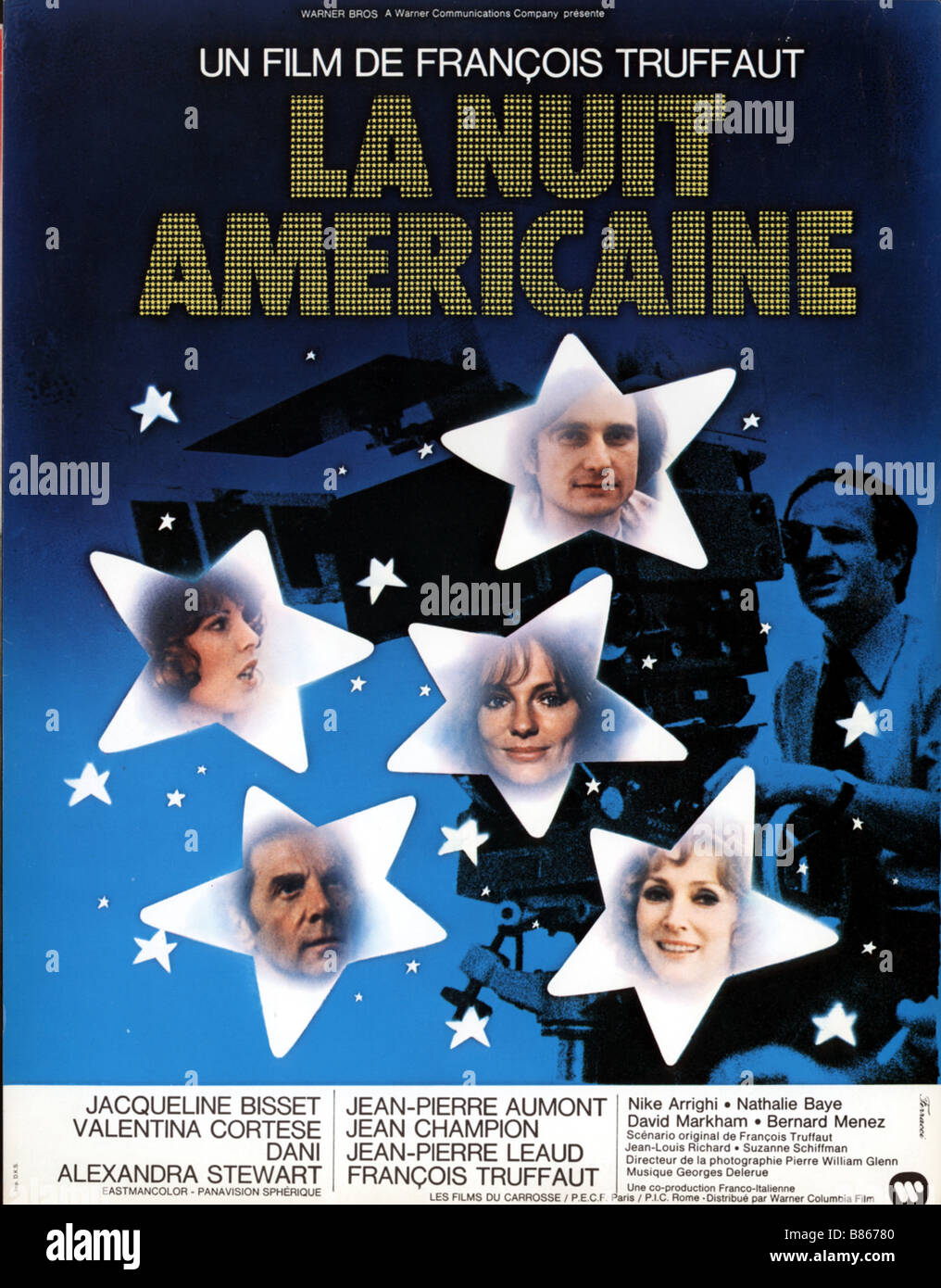CAYER DU CINEMA
La Nuit Americaine

"La Nuit Americaine" is a 1973 masterpiece of Hollywood Cinema, featuring a cinematic technique to represent night in daytime. The storyline is complex, with multiple conflicts and dynamic characters. The director, François Truffaut, plays the role of the director, and the cast includes Jean-Pierre Léaud as Alphonse, Dani as Liliane, and Jacqueline Bisset as Julie Baker. The film tackles issues such as conflicts between the cast and staff and a love story between Alphonse and Liliane. The editing of the movie involves various elements, such as cuts, angles, and camera takes. The film begins with a change of point of view, revealing the city life and confusion. The camera moves towards the main character, contrasting the surroundings with the dull color. The film also features jump cuts, such as a close-up on the director's face, a long take, a jump cut, and a long take, establishing the scene and enhancing the director's decision-making power. Now that I have established the beginning of the movie with some shots and cuts, I would like to move on and analyze deeper the mise en scene. If I take into consideration the scene starting at (8.09) there are few furnishings with a plein wall behind the two characters discussing the photos, the characters look at the photos to move the attention towards the pictures, the director’s costume is brown and white and does not convey a sense of dynamicity yet more seriousness with the suit and tight compared to the other character dressed casually with just a jeans vest and a shirt. In addition, there is a use of high-key lighting which according to Bordwell, Thompson, and Smith “creates relatively low contrast between brighter and darker areas.” (Bordwell, Thompson, and Smith 129). Taking into consideration another scene which applies mise en scene at (10.54) Alphonse and Liliane are entering the room which in this case has a duller color, the walls are white, the light in contrast is suffused to create a sense of intimacy between the two characters who in fact are lovers. The little lamps above the bed function as backlights and no frontal lights appear to lighten the face of the two actors; however, their silhouettes appear to be accentuated. Liliane seats on the bed to interact with the bedside table next to her while Alphonse stands conveying a sense of superiority (in this case Liliane appears to be offended by Alphonse’s action to look at the maid). An interesting camera angle reveals Alphonse in the back using the mirror which is placed to remind the viewer of his presence. (11.14) The costumes are simple, and the colors are neutral not really characterizing the characters, yet it gives a sense of familiarity. To conclude, “La Nuit Americaine” is a masterpiece that shows all the technical skills of François Truffaut, from the development of the characters to the mise en scene, which is meticulously chosen to engage the audience even more on every scene. Elements such as color, lighting, and decors are of paramount importance in the movie set and produce a sense of a compelling effect on the viewer. It would be interesting to dig deeper into the choice of the director to appear in the movie.


